Wondering what is considered high and low indoor humidity? If so, don’t hit that back button because that’s what we’re going to review in this article. We’ll go over what’s considered high and low indoor humidity, the causes of a humidity level that’s too high or too low, the ideal indoor humidity level you should shoot for, and things you can do to achieve it.
What Is Considered Low Indoor Humidity?
Indoor humidity refers to the amount of moisture present in the air inside a building. Low indoor humidity can significantly impact the health and comfort of individuals living in a home. An indoor humidity level between 30-50% is ideal. Anything below 30% is considered low indoor humidity.

Low indoor humidity can cause a number of uncomfortable health issues, including dry skin and irritated sinuses.
As indoor air gets drier, wooden floors can start to shrink and crack. The lack of moisture in the air causes wood to lose its natural oils, making it brittle and aesthetically unappealing. Low indoor humidity can also damage furniture, books, and other household items that need a certain level of moisture to avoid cracking or warping.
During colder months, low humidity levels are more common due to heating systems, which can decrease indoor moisture levels.
To combat low indoor humidity, individuals can use a humidifier to increase moisture levels in the air. Humidifiers can help alleviate dry skin, prevent respiratory issues, and improve overall comfort within the building. We’ll talk more about combatting low indoor humidity in just a bit.
Symptoms of Low Indoor Humidity
Signs the humidity level in your home is too low include the following:
- Static Electricity – One of the most common signs of low humidity levels in a house is static electricity. You may receive an electric shock if you touch metal objects or other people. Your clothes may stick to each other (static cling), and your hair may exhibit signs of static electricity.
- Sore Throat, Itchy Eyes, and Dry Nasal Passages – Low humidity can also cause respiratory problems, such as asthma and sinusitis.
- Wooden Items Inside your Home are Starting to Crack or Warp – These may be wooden floors, furniture, or musical instruments.
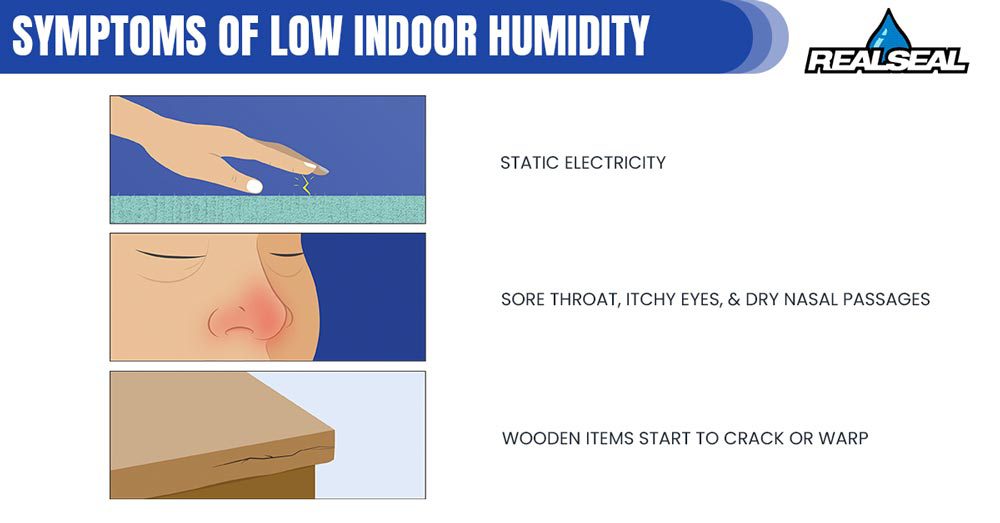
If you notice anything listed above, it might be worth investing in a humidifier or contacting an HVAC professional to assess your home’s humidity levels and recommend the appropriate solution.
What Is Considered High Indoor Humidity?
An indoor humidity level above 60% is considered high. When indoor humidity levels rise above 60%, it can lead to a variety of negative consequences, including the growth of mold, mildew, and bacteria, which can aggravate allergies and cause respiratory issues.
High indoor humidity can also potentially increase energy costs as the air conditioning system must work harder to cool the air. It can also lead to condensation on windows and other surfaces, which can cause water damage and promote bacteria growth.
For more information, see Take Care Of Moisture Issues First, Before Insulating The Basement.
What Is the Ideal Indoor Humidity?
The ideal indoor humidity level is between 30 and 50%. To measure the humidity in your home, you can use a hygrometer, which typically ranges in price from $10 to $50.
How to Achieve a Comfortable Indoor Humidity Level
You can take several steps to maintain a comfortable indoor humidity level. These include the following:
Use a Humidifier or a Dehumidifier
First, invest in a quality humidifier or dehumidifier, depending on your specific needs. If the air is too dry, a humidifier will add moisture to the air, and vice versa with a dehumidifier. Choosing the right size unit for your space is crucial, as an undersized unit will not be able to control the humidity level effectively.
Maintain your HVAC System
Additionally, regularly cleaning and maintaining your HVAC system can improve its ability to control the humidity level in your home.

Ensure Good Ventilation
Another way to regulate indoor humidity is to ventilate your home correctly. Proper ventilation allows fresh air to circulate, reducing the buildup of moisture and preventing mold growth.
Control Interior Moisture Sources
Controlling the sources of moisture within your home can also contribute to maintaining a comfortable indoor humidity level.
If you’re trying to lower the indoor humidity level, consider doing the following:
- Avoid drying wet clothes inside
- Fix plumbing leaks promptly
- Make sure clothes dryers are properly vented
- Use exhaust fans in bathrooms and kitchens
If you’re trying to increase the indoor humidity level, you could try the following:
- Cook without using the exhaust fan
- Leave the bathroom door open when you take a shower
- Decorate your home with houseplants
It’s important to note that external factors such as the climate and time of year can also affect indoor humidity levels. For example, during the winter, humidity levels tend to be low due to cold, dry air, while during the summer, humidity levels tend to be high due to warm, humid air.
If you’re concerned about problems related to high or low indoor humidity in your Chicagoland home, contact The Real Seal Basement Waterproofing and Foundation Repair today to schedule an evaluation.
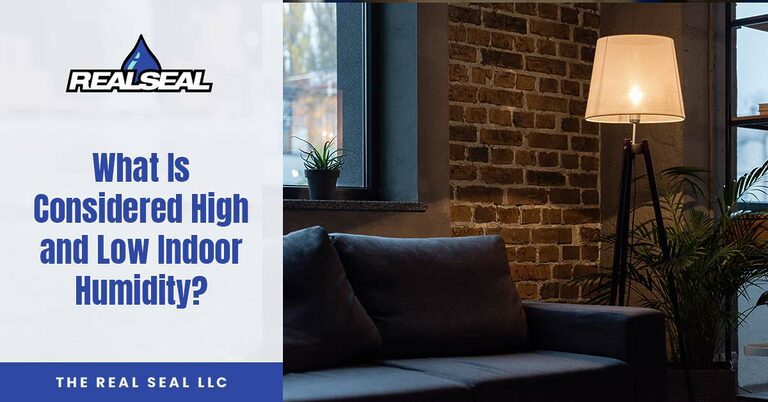
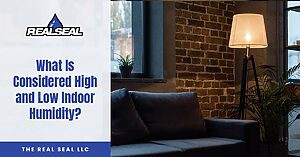
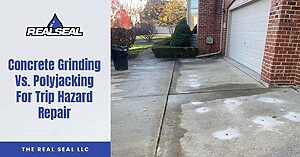
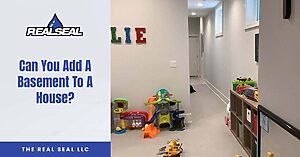
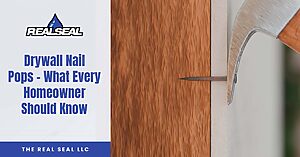
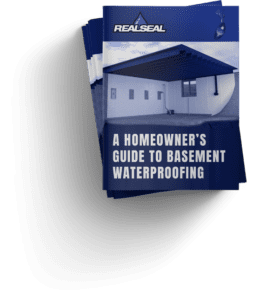

2 Responses
Great post! I never realized how much humidity could affect comfort and health indoors. The tips on maintaining the right levels are super helpful!
Happy to help!